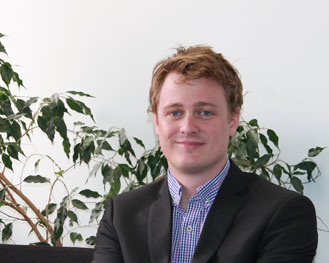Putting a human face on our work
 I knew that talking to people was an essential part of the job but I never imagined I’d be sitting in a coroner’s court listening to details of a tragic event, just behind the family of a young person who had died.
I knew that talking to people was an essential part of the job but I never imagined I’d be sitting in a coroner’s court listening to details of a tragic event, just behind the family of a young person who had died.
Almost two years ago, when I began this job, I expected to deal with financial stuff. Performance auditing is so much more than that.
Nothing has confirmed that to me more than the experience of sitting in on that inquest.
Walking into a room and taking a seat directly behind the family of the person who has died is confronting. I was present for a deeply private and painful experience in these people’s lives.
What did I see? It was exactly as you would expect of a courtroom, very professional and formal with all the important questions asked and mostly answered. So why was I at this inquest? I was there as part of my current performance audit looking at how information is used to prevent suicide. An important thing to understand about performance auditing is that there is only so much you can learn from documents – to really understand a topic or process sometimes you need to see it unfolding in real time. These inquests are where some of the information we are looking at is gathered.
In our months of work on the topic of suicide information, we collected and reviewed many of the documents and pieces of information that coroners gather as part of their role in determining the cause of a death. It was really important for us to see this part of the suicide prevention information system.
Sitting there with the family, you don’t think that it’s good they’re getting all of this information. You’re thinking how hard for this family to have to go through this.
It puts a human face on our work. Many people think that auditors don’t see those faces. In my time working for the Auditor-General, I’ve had the privilege of seeing many faces – and those faces encourage me to keep doing the work that we’re doing.
In some ways, the coronial process is the starting point for prevention. Part of the coroner’s job is to make recommendations that will potentially prevent similar deaths in similar circumstances. The inquest process is where a lot of information can be gathered for future prevention. However, there must also be an understanding of what information is needed.
We wanted to know what information is presented, how it’s presented, how that information is shared, and where it goes.
When I was told we were looking into suicide, I was nervous. There’s a pressure there. It’s daunting.
This isn’t numbers on a page. It’s people. Each of the numbers represented in the suicide statistics is a person. But as auditors we must look at where we can make a difference. Where can we add value? We realised this is in looking at the information collected about suicide to help prevent future suicides.
As a performance auditor you have to remain independent and objective in looking at the subject. The subject of suicide can make people upset or nervous and even angry and that’s understandable. Suicide happens often enough in this country that you probably know someone who has been touched by it. I do, and that made this subject all the more personal to me.
Before beginning work on the suicide information audit, I was part of the Christchurch rebuild audit team. After this, I’ll be working on court modernisation – two years and three very different audits.
There aren’t a lot of places that you can work at where you can learn something completely new for nine to twelve months and then produce a piece of work that can change things for the better. And then you get to do it again – with a whole new topic. It’s a unique position to be in and it’s something I feel very lucky to be able to do.
The Auditor-General will publish her performance audit report on collecting and using information on suicide before the end of this year.
Update (16 June 2016): You can now read our report Collecting and using information about suicide on our website.
